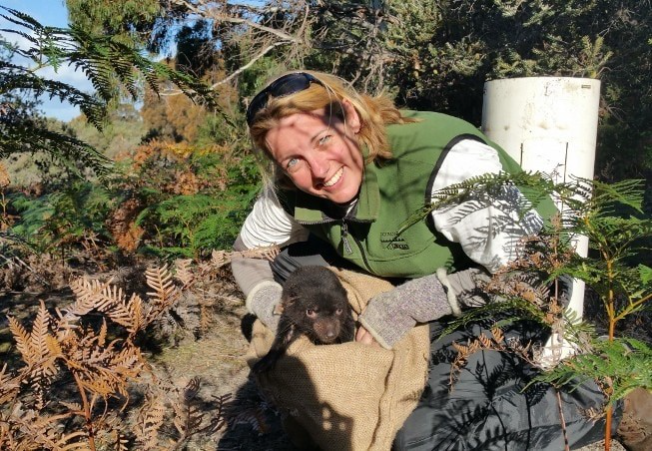
Australasian Wildlife Genomics Group Cuts Research Time from 10 Days to 5 Hours Using RONIN on AWS
2021
The Australasian Wildlife Genomics Group, a part of the University of Sydney in Australia, studies the molecular genetics and the evolution of gene families and genomes of native Australian wildlife. The group’s researchers focus specifically on wildlife biodiversity and animal extinction threats.
When the group recently started studying reasons for the decline of Australia’s Tasmanian devil population, researchers were limited by the compute capabilities of the university’s on-premises high-performance computing (HPC) environment. “We’ve been studying the population decline for a long time, looking at the disease causing it, and we now use thousands of genomic markers in our research,” says Dr. Carolyn Hogg, senior research manager for the Australasian Wildlife Genomics Group. “Our research was out-stripping our on-premises HPC solution in terms of scalability,” she adds.
As an example, the group’s researchers continually analyze 3.2 billion data points for one Tasmanian devil, a process that sometimes would take up to 10 days to complete because of long wait times for research capacity on the shared HPC queue. As a result, researchers needed more compute capacity and wanted the ability to expand that capacity up or down on demand as they looked at newer data sets.


AWS helps us expand rapidly in real time while we are doing our analysis. Rather than make the data fit the compute we have available, we can make the compute fit the data we have.”
Dr. Carolyn Hogg
Senior Research Manager, Australasian Wildlife Genomics Group
Implementing RONIN and Intel on AWS
Reducing Genome Analysis Time from 10 Days to 5 Hours
Gaining Seemingly Infinite Scalability
Expanding Research Opportunities
Since moving to AWS, the Australasian Wildlife Genomics Group has grown its research opportunities to additional conservation partners. In the future, the group plans to use these HPC capabilities, using the RONIN environment, as a solution for other species. “We’ve now started working on a nationwide threatened species initiative,” says Hogg. “We wouldn’t be able to process these kinds of research data in real-time conservation partnerships without the flexibility and scalability we get from running on AWS.”
To learn more, watch the video below and visit thinkwithwp.com/hpc.
About Australasian Wildlife Genomics Group
A part of the University of Sydney in Australia, the Australasian Wildlife Genomics Group studies the molecular genetics and evolution of gene families and genomes of the country’s native wildlife.
Benefits of AWS
- Reduces genomic analysis time from 10 days to 5 hours
- Increases scalability for HPC workloads
- Scales research capacity up or down on demand
- Expands research opportunities to new departments within the university
AWS Services Used
Amazon Elastic Compute Cloud
Amazon Elastic Compute Cloud (Amazon EC2) is a web service that provides secure, resizable compute capacity in the cloud. It is designed to make web-scale cloud computing easier for developers.
Get Started
Companies of all sizes across all industries are transforming their businesses every day using AWS. Contact our experts and start your own AWS Cloud journey today.